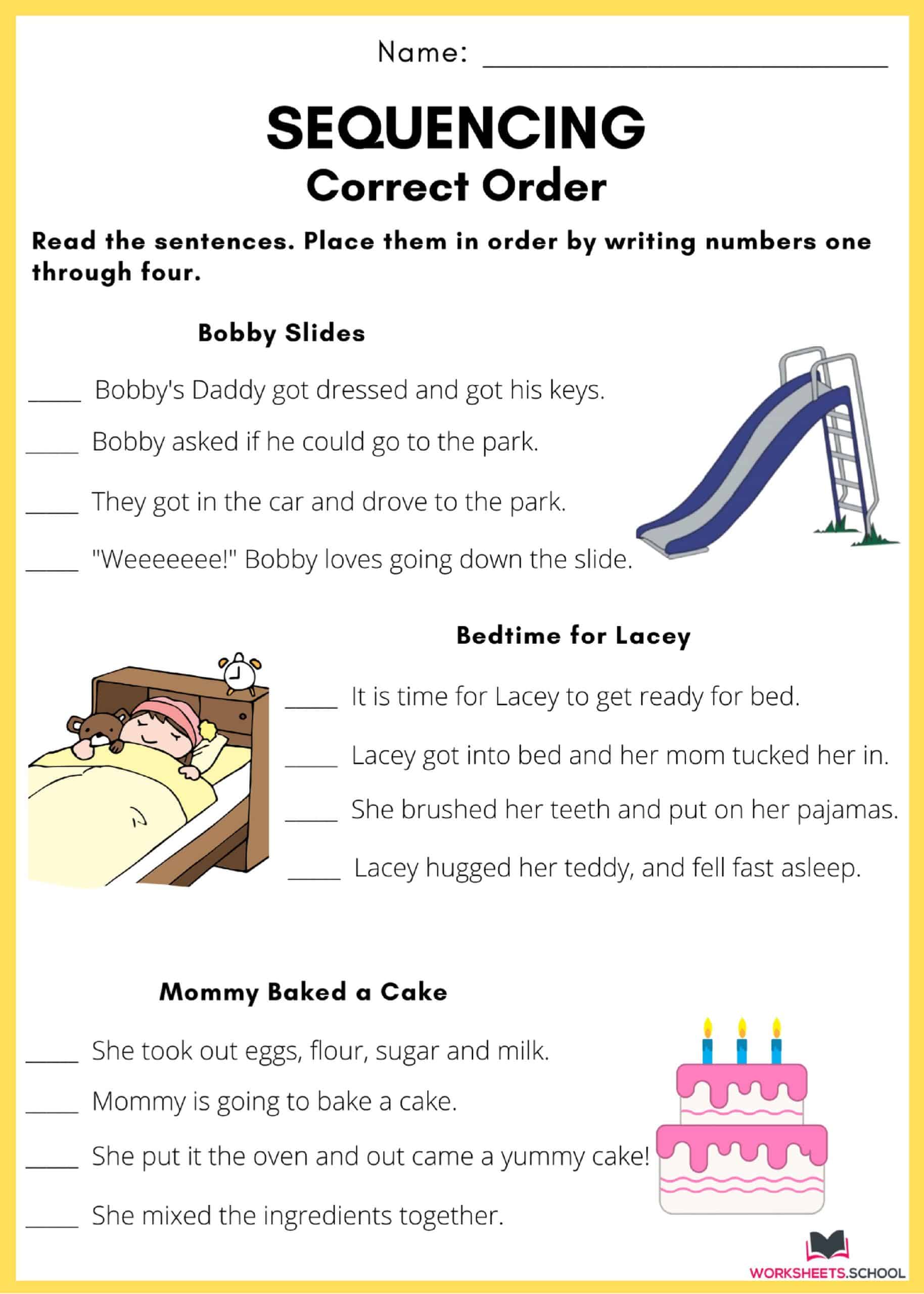
Storylines usually follow some type of sequencing that helps readers understand the plot. As a teacher, you should help your students develop their sequencing skills so they can comprehend what they read. To help them through, provide them with sequencing worksheets to practice on.

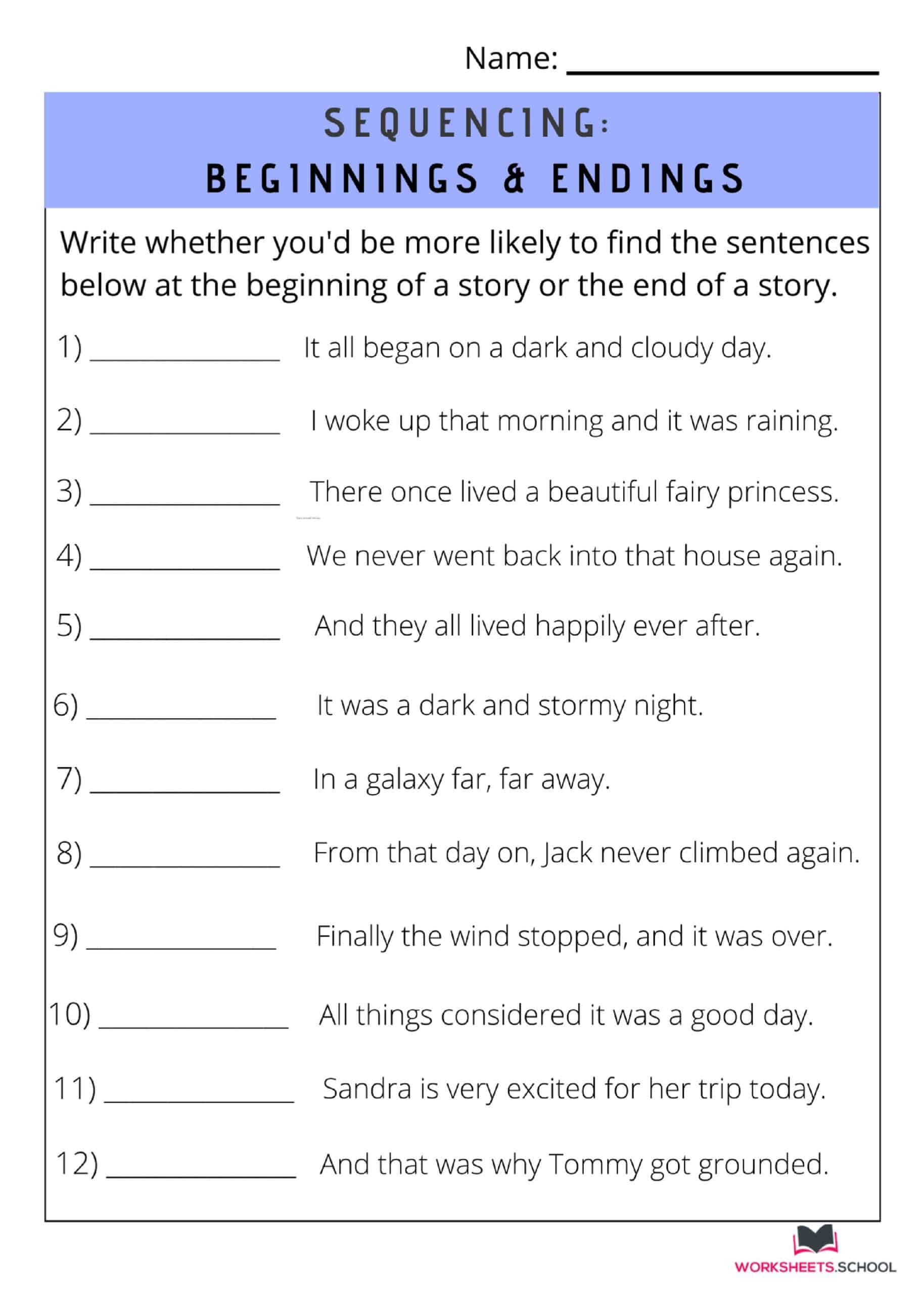
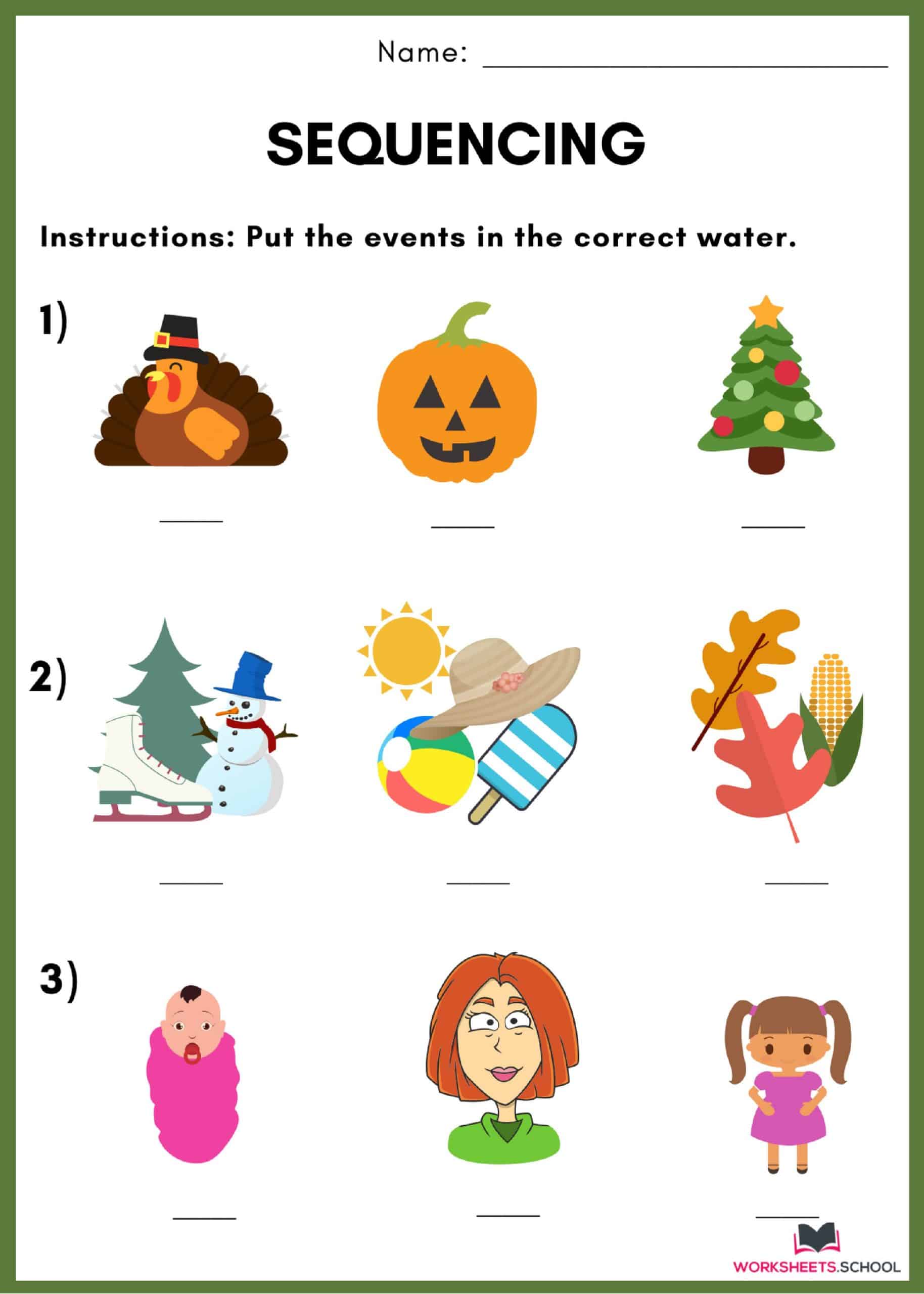
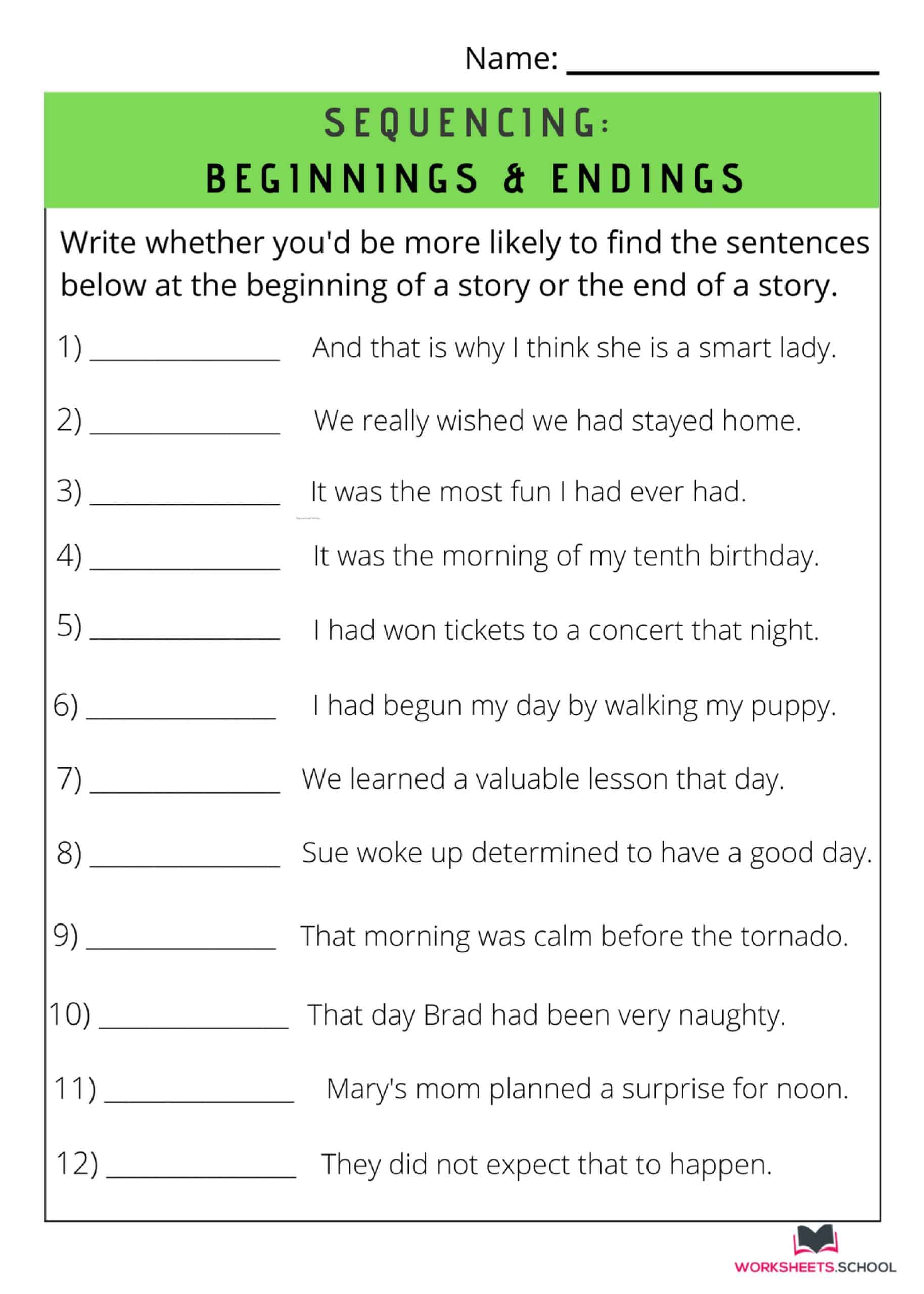
Sequencing is an essential skill that can help students understand whatever text or story they read. Sequencing is the ability to identify the parts of a story like the beginning, the middle, and the end – and the ability to retell the story’s events in the order by which they took place. This skill of sequencing events is an essential strategy for comprehension, especially with texts that involve narratives. Students can easily find the meaning in texts if they have the ability to comprehend and place details in order within a larger context. The sequencing of events in a story is typically supported by connecting words like once upon a time, later, then, afterwards, and the end. Understanding these textual features can give students a way to integrate the individual parts of a story into a larger framework, thus, understanding the objective of the author. As previously mentioned, you can help your students build this skill through sequencing worksheets.
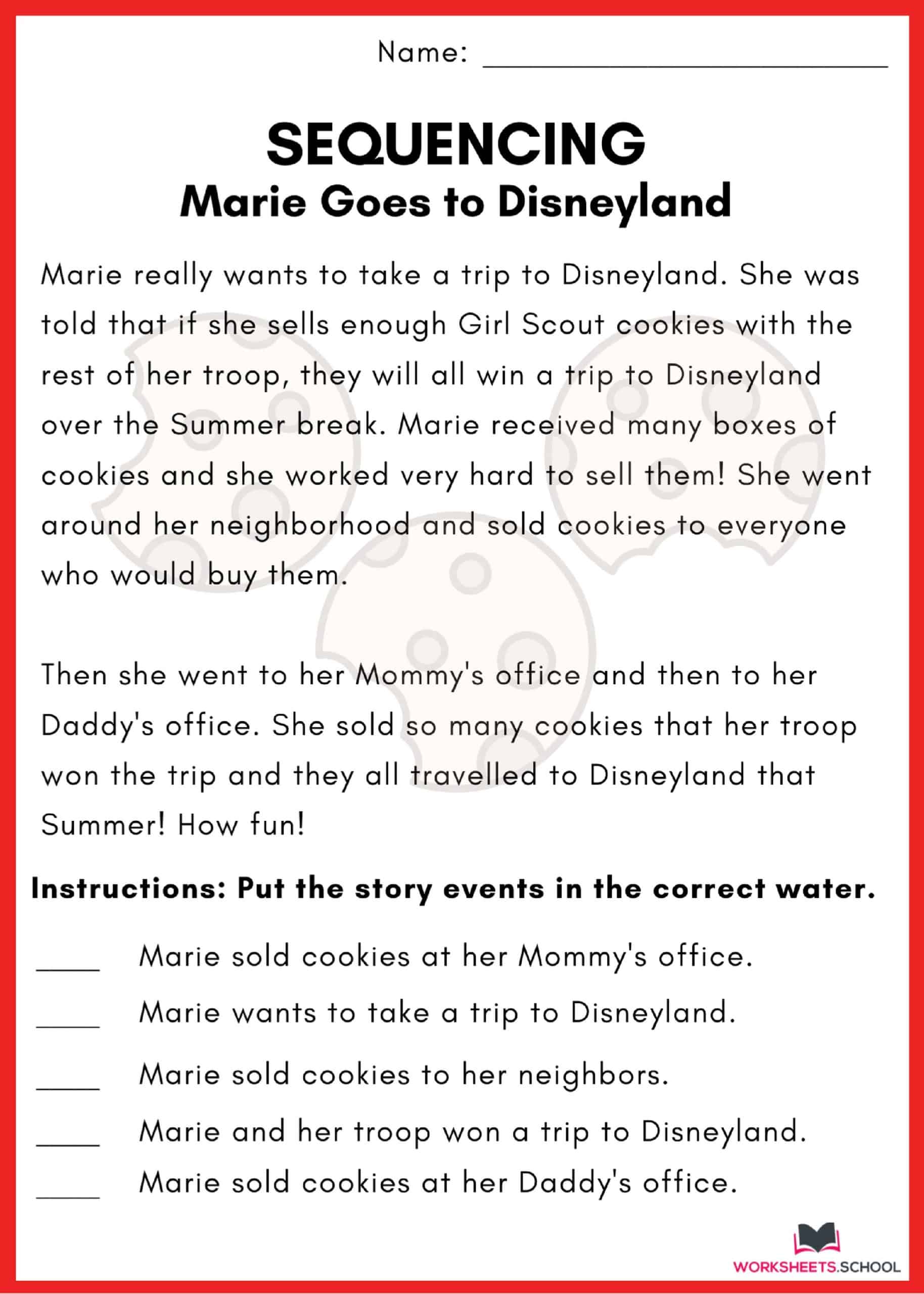
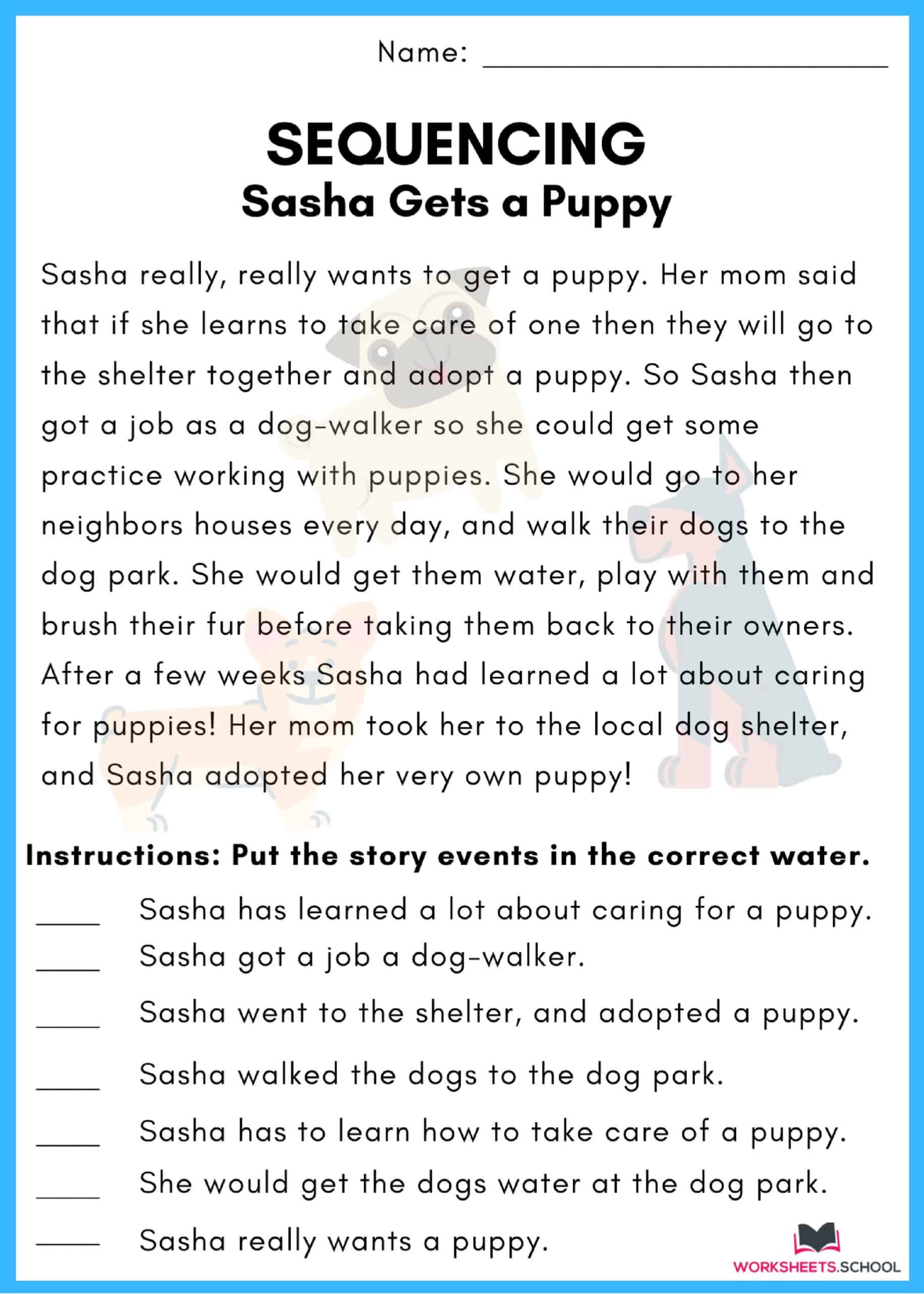
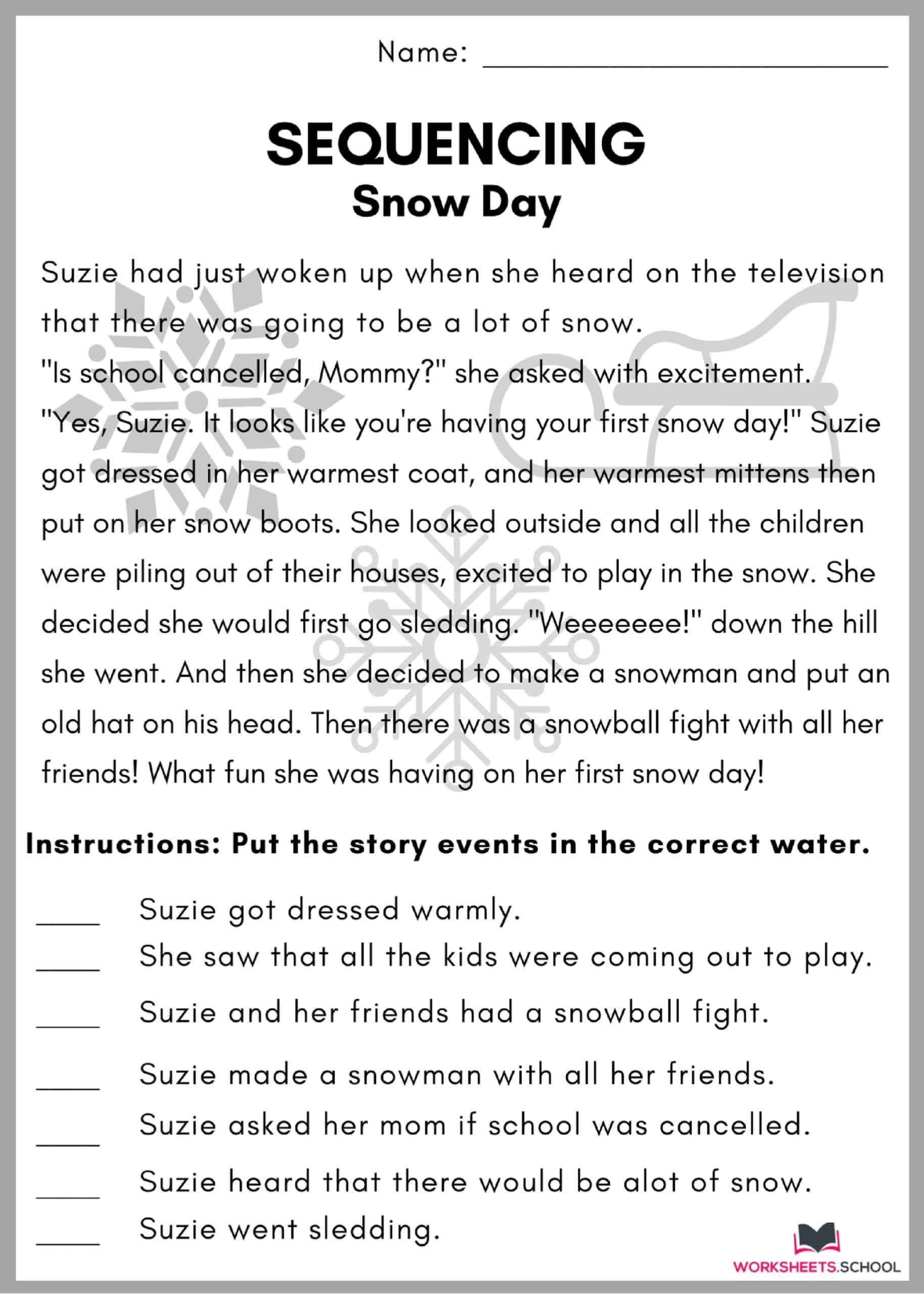
How to sequence texts is an important skill that students must learn. The main focus of learning sequencing begins in the lower grades although in many classrooms, students learn this concept in varying grade levels. Learning how to sequence is important. Most of us might not even realize that the daily routines in our lives involve events that occur in sequence. Some elementary students may have some difficulty in understanding the concept of sequencing events, much more so if you ask them to retell the story in the correct order. This is where story sequencing worksheets some in. Through these, your students can focus on the main elements of the narrative. If your students can identify where the beginning, middle, and end take place, this means that they have a decent hold on the story. To help them develop their sequencing skills, sequence of events worksheets work very well. The ability of students to sequence events is a skill that helps them understand what they’re reading. Through sequencing worksheets 2nd grade, 3rd grade, 4th grade, and so on, students can identify of the common parts of a story and gain the ability to retell the story in chronological order. This is an essential ability, especially when it comes to reading narratives. It also proves valuable for problem-solving across subjects.
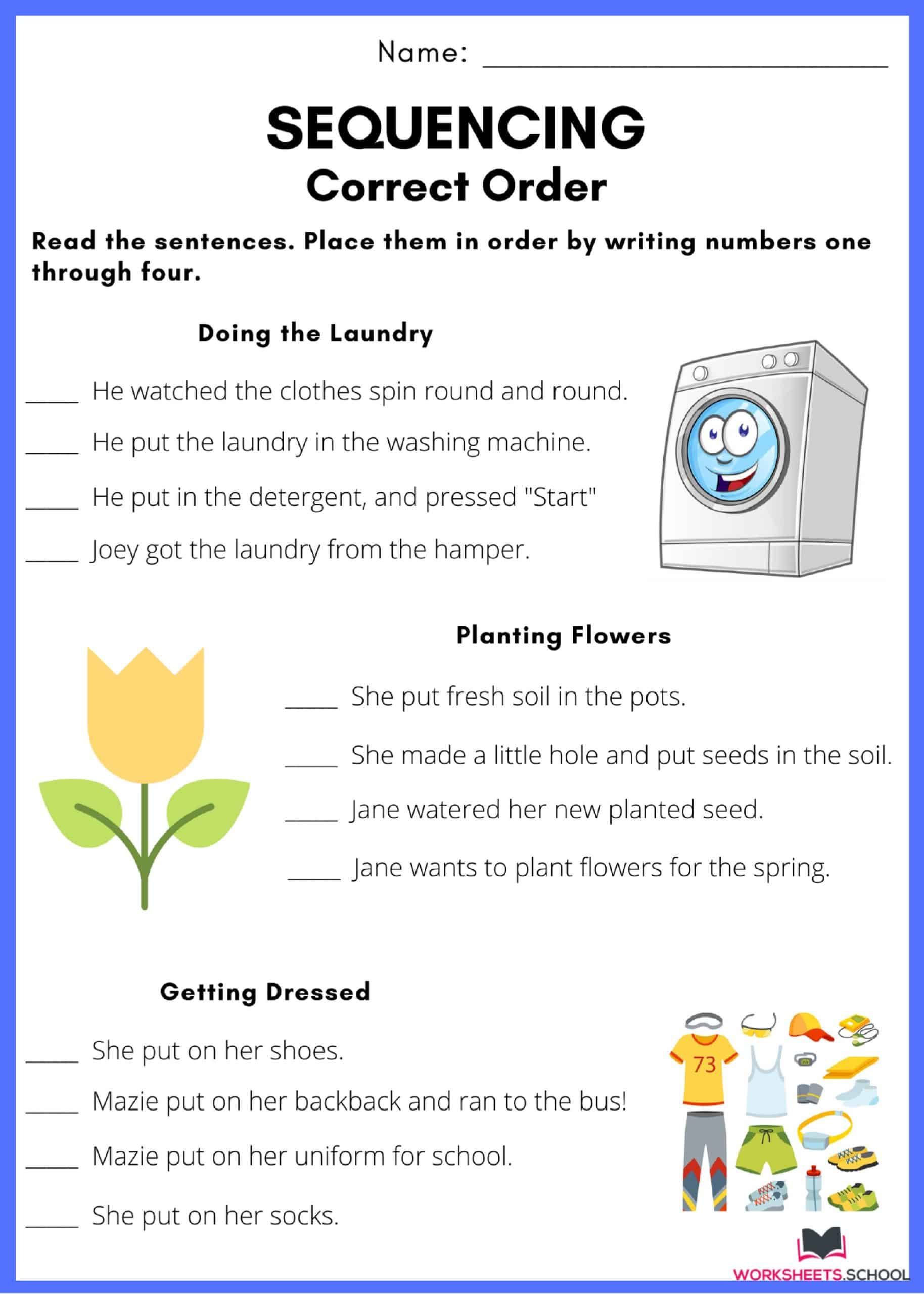
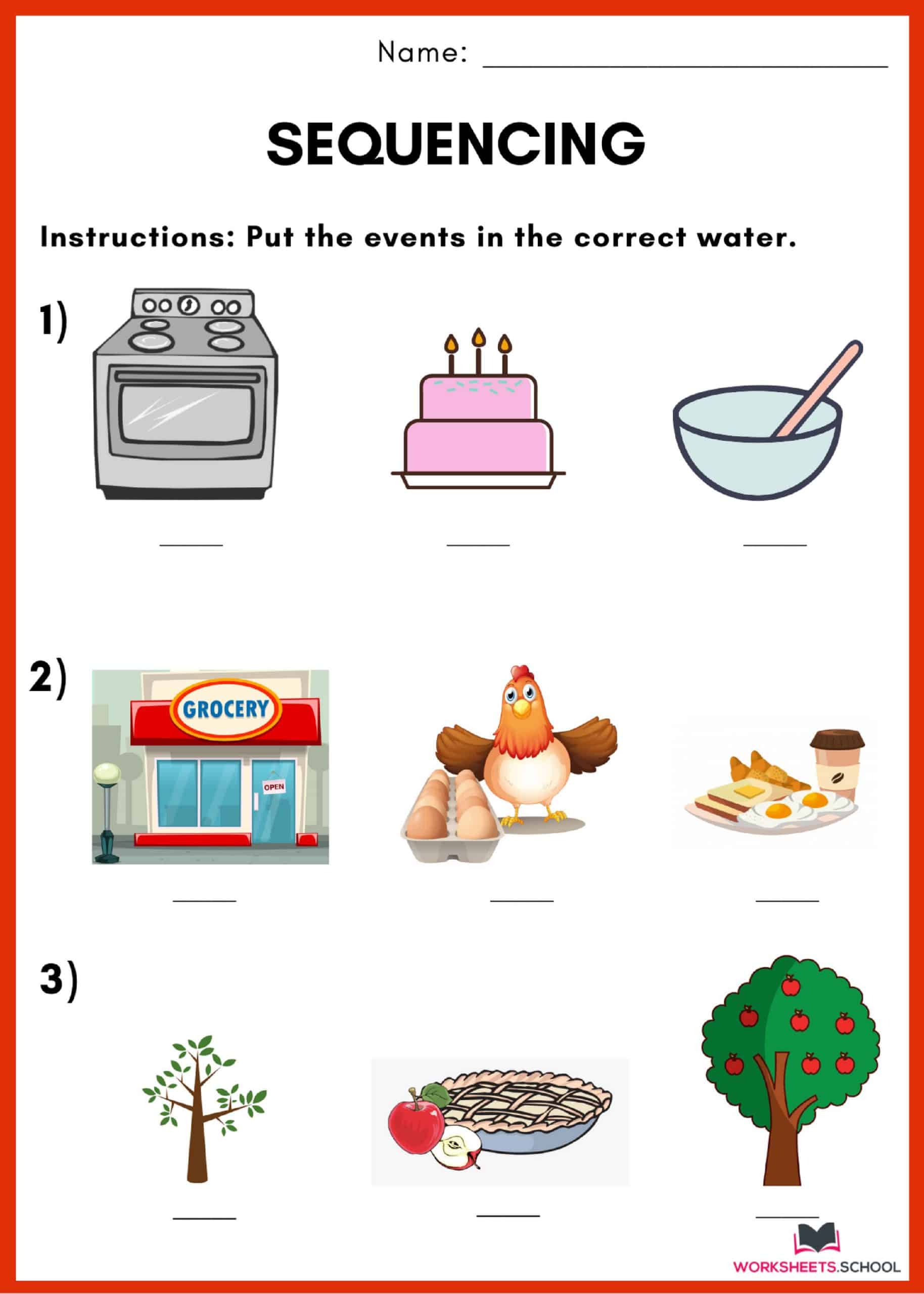
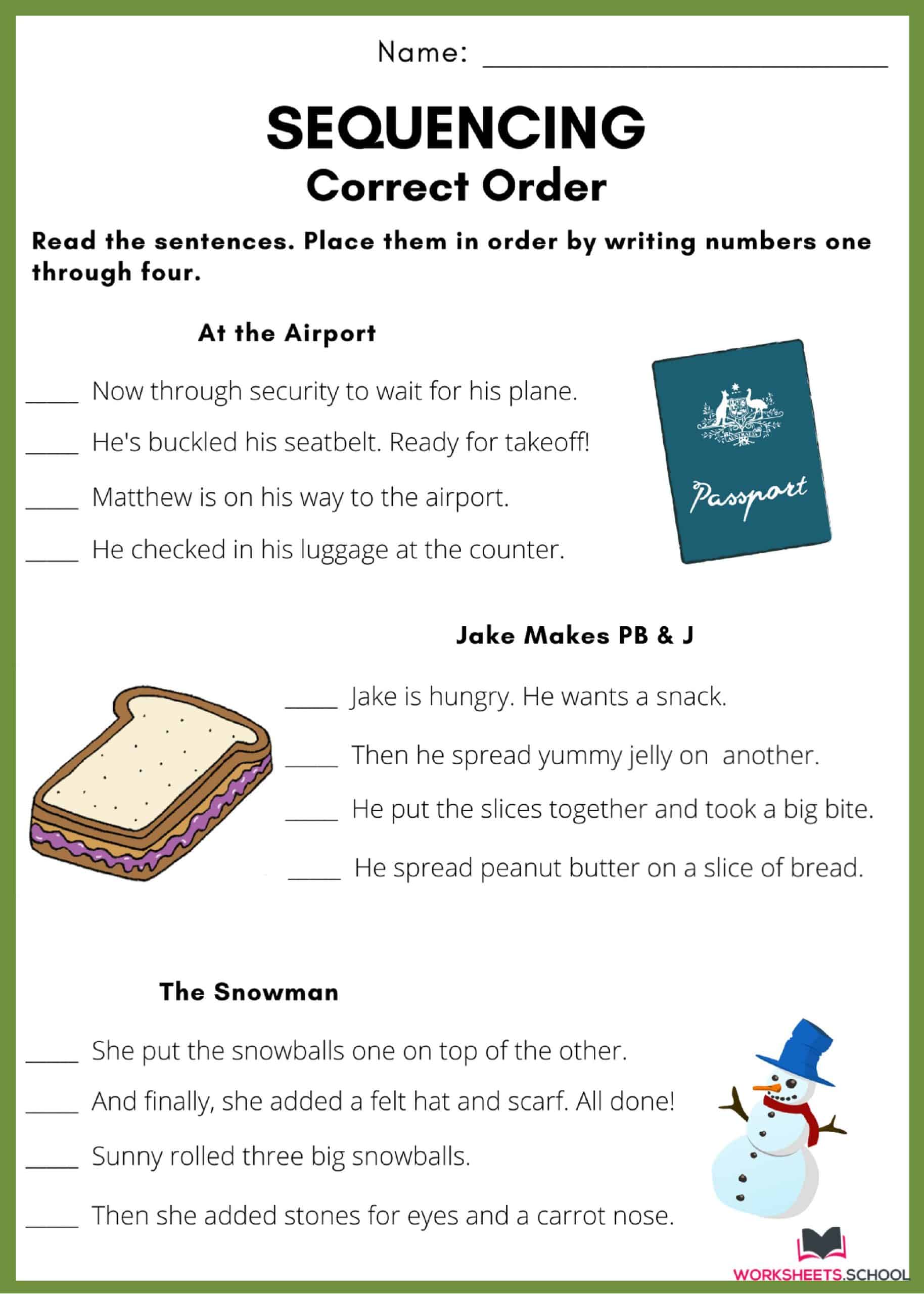
There are several ways to apply the concept of sequencing to literature and reading in teaching strategies like thinking out loud, writing in journals, and more. Here are some examples where you can apply the concept of sequencing and use sequencing worksheets for practice:
Apart from using sequencing templates, one great way to help your students organize a sequence of events from a story is with the use of story maps. With these, students learn how signal or transition words can point to a sequence. Other proper like story chains, sequence sticks, story sequence crafts, and story retelling ropes can also help your students practice this skill.
Most math subjects curricula involve sequencing templates on ordinal numbers. For math lovers, they know that patterns are also a type of sequencing which may encourage the use of vocabulary words related to the concept. For instance, students can write the steps of solving subtraction and addition problems that include regrouping. This is a great way to make them come up with the steps in order. You can use a sheet of paper folded into squares then ask your students to write the steps in the correct order inside the squares.
Helping students learn sequencing can help develop their scientific inquiry skills. For instance, in order to observe or study changes in something, students should follow along by recording these changes. These changes, of course, occur in a specific order, thus, allowing you to use sequencing worksheets 2nd grade, 3rd grade, 4th grade, and more for this subject.
Timelines are an excellent way to teach sequencing in social studies subjects. Children may enjoy creating a timeline of their own lives, including the most important milestones like learning how to crawl, when they said their first word, their first bike ride, their first day of school, and so on. Once they understand the process of sequencing events on a timeline, they can apply this to social studies curricula.